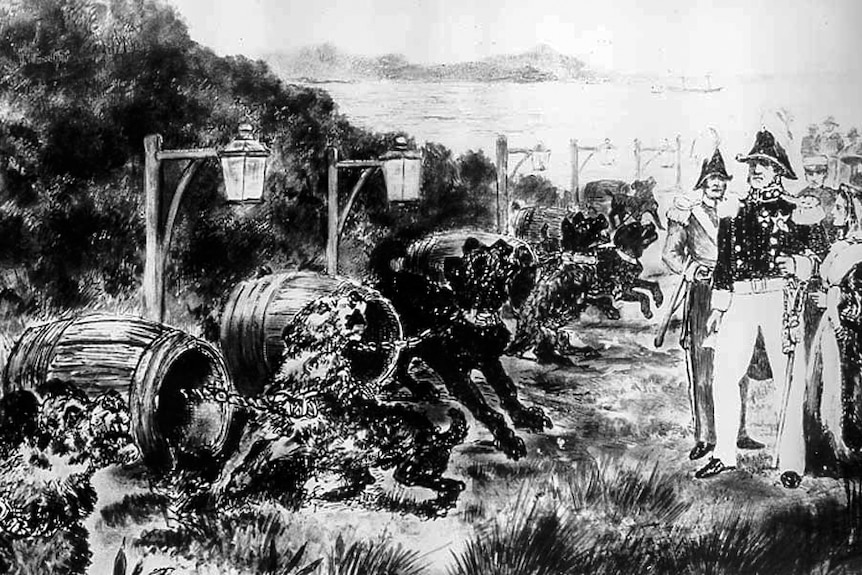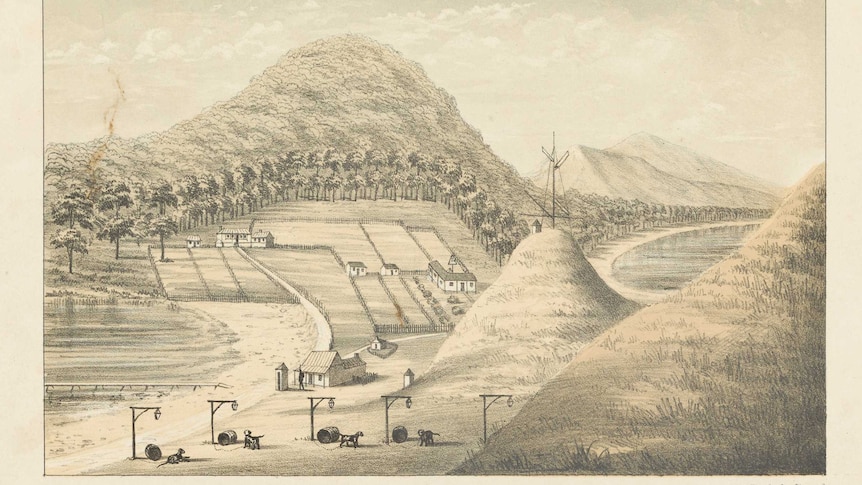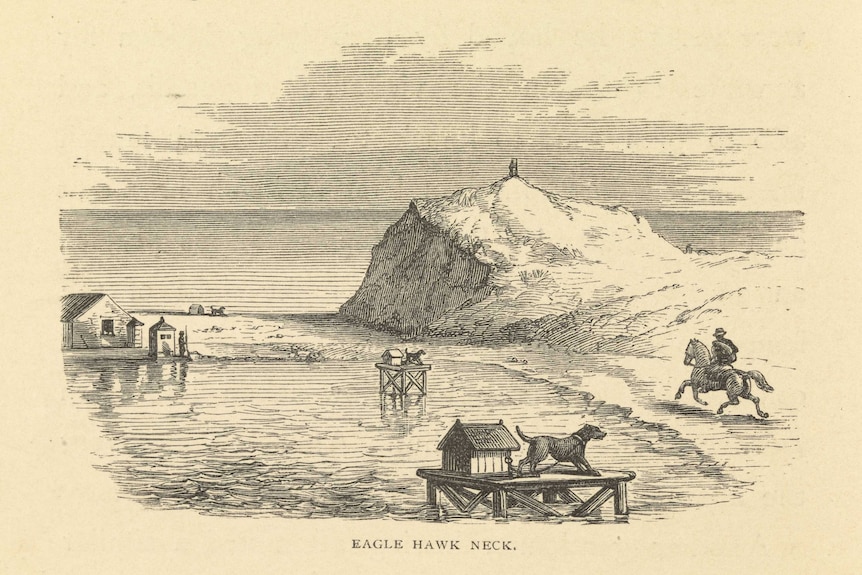I've never heard of Presa Canarios, Alano Espanols, Tosas or Dogo Argentinos in Australia. All of which I think could have contributed to pig dog mixes if they came here. All these except for Alano Espanols are banned, but even before they were banned there weren't any here. If they would have come in it would have likely been in the early 00s when cane corsos and boerboels and americans bulldogs (and blackmouth curs, and coonhounds, and catahoulas) started coming in. But by then they were banned. Somehow the fila brasileiro managed to get imported after it's ban, but I'm only aware of a small number which went to one breeder in the Northern Territory. I never heard him say they were bad, in fact he was hyping them, but tbh it was like a weird passion project where he bent over backwards to get Fila Brasileiros into the country, so it might be difficult for him to be unbiased and honest about it. I never heard about them actually taking off and spreading around, or going to even one other guy.
Cane corsos were a failed passion project too, but the people were refreshingly honest about their disappointment and frustration with the dogs they got.
Mostly aussies are nothing if not honest, they tend to keep it real and keep bullshit to a minimum, especially if there's a few involved all keeping each other accountable. Being a blowhard full of shit is like social suicide, so generally you don't see much hyping and big noting even if it may be justified, they are much more comfortable shitting on things. Even their own dogs. A perfect dog just gets a small "nod", a slightly flawed dog gets complained about severely. That's how it has always been and what separates Australia from most places.
It's part of the reason I think analysing the aussie pig dogging culture is so valuable because it's not made murky with swindlers and snake oil salesmen and scam artists, with the odd exceptions, but they will be called out. There has been a pretty honest and open "trial and error" process and the proof is in the pudding with what works multiplying and spreading around.
I guess I could add Galgo Espanols and Galgo Patagonicos as good breeds that didn't come here. I think aussies would have loved the galgo patagonico especially, they have loved the wolfhound and the staghound, and I see no reason the patagonico wouldn't be just as good in crosses and probably better pure. They're not banned or anything, but also probably not really on anyone's radar. We have greyhounds, we have whippets, we have greyhound x whippets, we have deerhounds, we have wolfhounds, we have deerhound x greyhound, we have wolfhound x greyhound, we have wolfhound x deerhound x greyhound etc etc. Between all that we probably have the galgos covered and they're not generating hype with anyone making out like they are something more, so there's no push to try and bring them here.
Our history with dogs is kind of weird, because we probably SHOULD have way more Australian breeds. Due to dingoes there were multiple pushes to ban all unnecessary dogs throughout the 1800s, all the way up until 1934. In 1934 "Alsatians" (aka german shepherds) were banned, because it was believed they were wild wolf-dogs and would mingle and breed too readily with dingoes. This was the last of many dog x dingo combatting bans.
Through the 1800s it was believed that pure native dingoes were fairly harmless, but dog/dingo hybrids for some reason were frankenstein's monsters that would kill all your sheep and also kill your wife and children. The only dogs exempt from random bouts of hysteria where dogs would be banned were necessary dogs - greyhounds (needed by settlers in the outback to feed their families), sheep dogs (kelpies and coolies) and cattle dogs (heelers). Also it seems Australian terriers survived the cullings (which btw were sometimes nationwide decrees by the governor general). That's why the only really "australian" breeds that remain from the early settler days to now are - the kangaroo dog, the kelpie, koolies, heelers (red, blue, stumpy tailed) and the scruffy Australian Terrier. That's it. Old paintings show we had staff-like bull terriers, big hairy guard dogs used to control/discipline convicts, spaniels, foxhounds, gun dogs, manchester terrier-like rat baiting terriers... probably more, I think no doubt, but it seems these all died out.



Convict dogs at Eaglehawk neck. I would consider these Australia's "bloodhounds", akin to cuban bloodhounds, "old southern boarhounds" of the southern US, Manila Bloodhounds, Fila Brasileiros of Brazil... to be fair most of these are extinct, not just the Australian kind.
But we SHOULD have a full suite of Australian breeds. The "sporting" types in particular, it seems, were deemed unnecessary and died out. They were really at their wits end and desperate to combat the dingo/dog problem and thought this was the best way (which is stupid, if anything was going to readily breed with the dingoes it was the herding dogs anyway).
This meant that coming into the 1900s there were mostly just heelers, kelpies and greyhounds. The bans eased off and the hysteria died down so gradually in the early 1900s breeds would start being imported into Australia, mostly now they would be these new-fangled things they call the recognised kennel club breeds. These were expensive and precious and deemed too important for utilitarian farm work, so for the longest time country people really didn't mess around with them. One exception might be the fox terrier, which Australians turned into the "tenterfield terrier" and "mini foxie" in the late 1890s early 1900s as a serious farm pest control dog.
But they were hunting kangaroos and emus and feral pigs and feral goats and feral cattle etc with kelpies, heelers and greyhounds. For the most part shirking at foxhounds, bloodhounds (st huberts type), pointers, retrievers, spaniels, exotic sighthounds, etc that were starting to come into the country.
Experimenting probably started with the EBT, show bred pet EBTs would start proving their worth to farmers in the late 60s and they would cross them with cattle dogs to catch mean nasty cattle. Australia has wild cattle and they have always been mustered and rounded up, but even the owned cattle on the expansive stations (expansive out of necessity due to the poor amount of grass) are "semi-wild" and hard to deal with. "Bully cattles" would become all the rage for cattle and feral pigs, and once that floodgate opened, people opened their minds to the city show dogs contributing to rural working crosses. Probably the next breed to break into that world, kind of strangely, was the boxer. I think the boxer is a crappy ruined breed but I can't deny it proved itself capable in working crosses in Australia in the 60s and 70s. In the early days you have kelpies, heelers, bully heelers, bully hoxers and boxer heelers... and staghounds. I don't understand why really but at first they were keeping the roo dogs/staghounds separate and not mixing them with the others. This would change in the 70s. The 70s are when they came up with the "bull grey" idea, and I think that was the biggest game changer of all. This was also when the bully x grey/pointer idea was tried. And the bully stag. And then just a few years later the experiments with great danes and mastiffs and bullmastiffs were tried. That worked pretty well too. The reliance on heelers and kelpies would start fizzling out in unison with these "breakthroughs". Don't get me wrong, heelers and kelpies still are significant players in the pig dog world, but they were the backbone and in the late 70s/early 80s they started falling back into the "supporting" role which they have now. Bully greys, bull arabs, bull stags and dane/mastiffs would become "the pig dogs". Wolfhounds and ridgebacks I think both joined the fray around the same time as eachother, and actually apbts showed up around that time too. It was the very late 80s or early 90s. Also people did experiment somewhat with foxhounds and bloodhounds at this time, but without much success.
As I have mentioned people were a little confused and annoyed about ridgebacks because they were expecting a hard lugging badass and they got a stand-offish rough cur. But it still had some success, and still has some success. Just needs to be crossed with hard dogs, then it can add some nice qualities. APBTs were deemed "fine", but actually didn't blow anyone away. Some people got into the idea of a lead-in catch dog because of apbts (drop dog, is what australians call them, because they don't lead them in but just release them from a cage on the back of a truck at the bay), but these were just a small minority of pig doggers. In a cross the apbt wasn't deemed better than the EBT, and the ebt x pig dogs were already established as legit working dogs so for the most part people didn't get that excited about apbts.
The wolfhound actually, surprisingly, proved probably most valuable in this "draft class". Hunters really liked the various things they added, from good skin and feet, a certain amount of intelligence and hunting nouse, surprisingly good noses, good speed and height and athleticism, and surprisingly hard too. Aussie pig doggers STILL really love wolfhound crosses. After just "bull arabs", I'd say wolfhound crosses are probably the next most "critically acclaimed" thing. Whether wolfhound x bullmastiff, wolfhound x ebt, wolfhound x bull arab, wolfhound x bullgrey, wolfhound x dane, wolfhound x stag. People love these dogs.
Next in the late 90s moving through to the early to mid 00s, that was when we got - american bulldogs, neo mastiffs, cane corsos, boerboels, dogue de bordeauxs, catahoulas, coonhounds, blackmouth curs...
For the most part, I think it's fair to say none of these really took the pig dogging world by storm. Probably catahoulas got the most love but from people who moved into being "catahoula guys" with rifles and moved away from traditional aussie pig dogging. American bulldogs weren't terrible and were used a bit in some crosses (the NQ bullhound, for example, is significantly influenced by the Ambull, as was the NT sporting bandog), but overall they didn't make that many waves. Neos actually were deemed ok, just as a mastiff component, but again not widely used. Cane corsos, boerboels and dogue de bordeauxs were all deemed crap. People unreservedly just said they sucked. I think people didn't much know what to do with coonhounds, though they do appear in small percentages in some crosses. Black mouth curs got some fans, similar to catahoulas but like a less popular movement.
If anything this last wave seemed more noteworthy during the 00s, but has since died out and people have largely all moved back to - bull arabs, bully greys, bullstags, wolfhound crosses, and dane/bms. Those are definitely, easily the "big 5".
I suspect alano espanols and presa canarios may have been different, but then it maybe would have depended strongly on the breeder chosen. It could be argued cane corsos got screwed by being represented by unusually bad breeders. I've seen some stuff from american cane corsos that makes me think some breeders are very good, we just didn't get them here.
Alanos and presas impress me from what I have seen, at least some of them. I think if those breeds came here we may have seen some dane x alano and presa x wolfhound and stuff like that having a lot of success.
